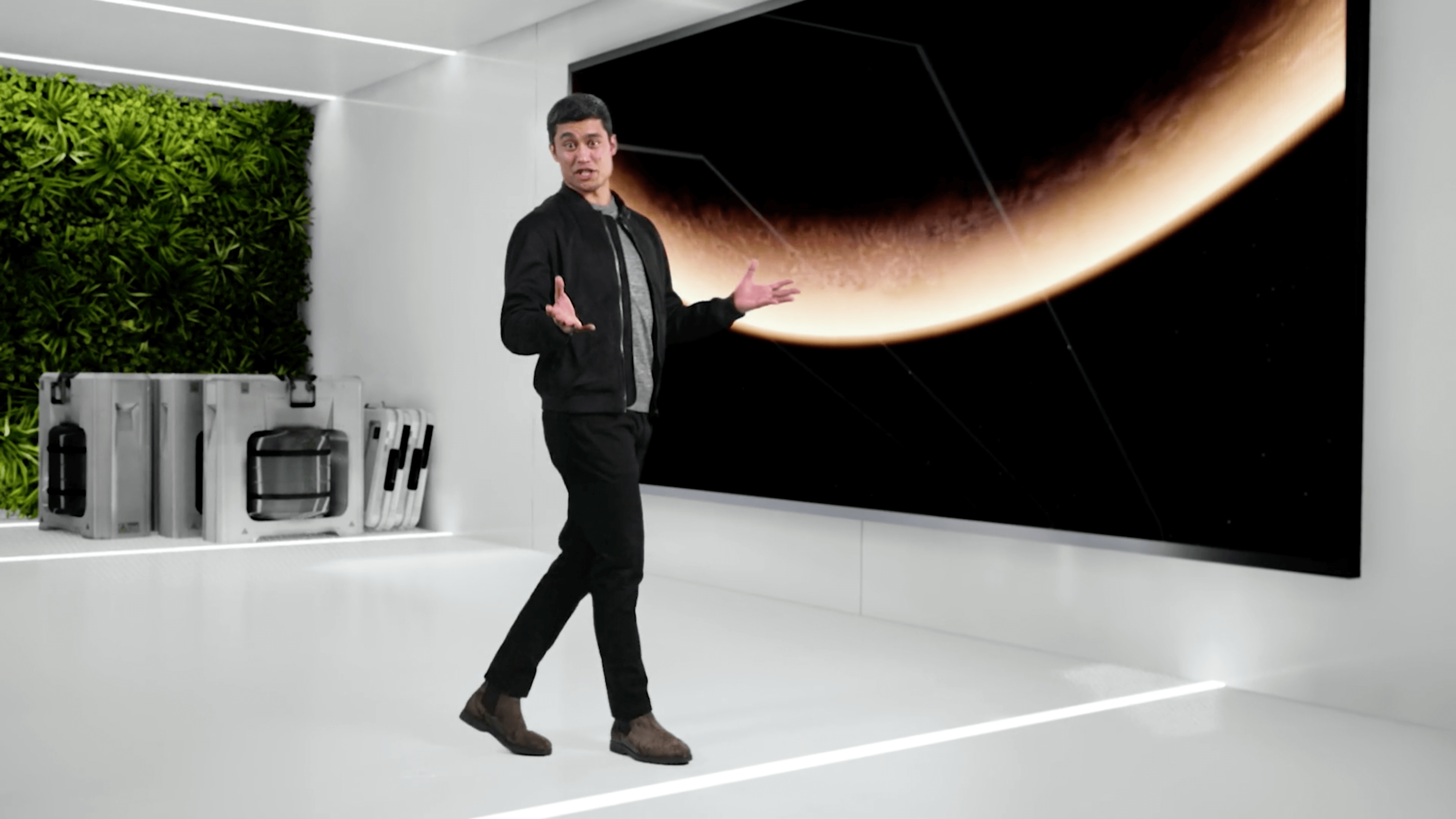


f we ever hope to send people to live on Mars for an extended period of time, we’ll need to keep them warm, safe, and well-fed. That last requirement poses a challenge on a mission that can carry only a limited amount of supplies. Even if canned beans weren’t so heavy, no one wants to subsist off of them for a year-long mission.
The future of Mars habitation requires freshly grown fruits, vegetables, and grains. But how do you farm on a poisonous, deadly planet like Mars? To get an answer, we spoke to three Mars researchers from the fields of ecology, geology, and biochemistry.
This article is part of Life On Mars – a 10-part series that explores the cutting-edge science and technology that will allow humans to occupy Mars.
Plants are hardy things, but they have some essential requirements. To grow well, they need warmth, reasonable atmospheric pressure, and protection from harmful radiation. Those things would be a challenge to provide on Mars, except for the fact that humans need all of them as well.
The simplest solution would be that whatever habitat you build to house astronauts on Mars you also build to house all the crops. Add some simple LED lights, and the astronauts can easily tend to their plants as they grow. Adding lights should counteract any effects of Mars’ lower gravity since, even in zero gravity, plants naturally grow roots away from light sources. The sealed environment even has the advantage that you can control conditions like temperature and humidity.
.svg)
.svg)
.svg)
.svg)
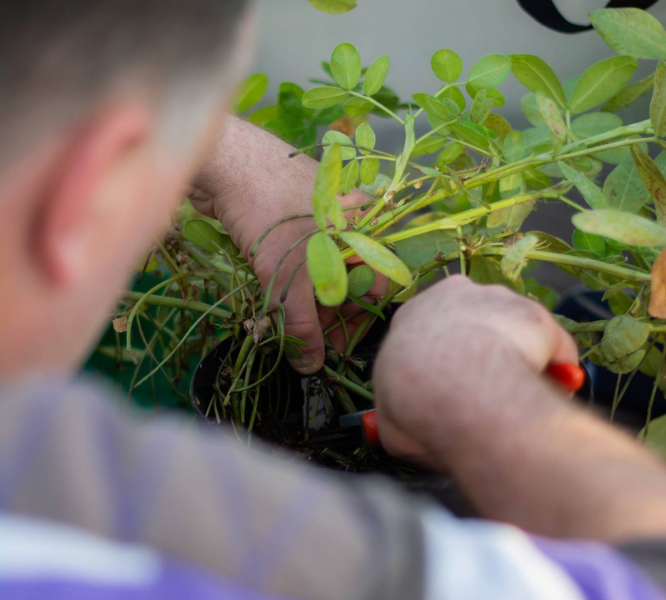
Wieger Wamelink, a plant breeder and ecologist at Wageningen University who is one of the leading researchers on agriculture on the moon and Mars, told Digital Trends that growing plants in space is actually very comparable to city agriculture, the movement to grow food efficiently in urban settings.
Often, that’s accomplished by setting up sterile environments in indoor habitats with LED lights. In principle, he said, “that’s something you can do on Mars, or in the desert if you want to, or in a city.”
%20(1).jpeg)




So he started planting seeds in Mars, moon, and Earth soil to compare their growth. In his first experiments, Wamelink expected plants would struggle in the Mars simulant. “It’s a very nutrient-poor soil,” he explained. It has no organic matter in it, and it contains heavy metals that could prevent plants from germinating. “My expectations were very low,” he said.
.svg)
.svg)
.svg)
.svg)
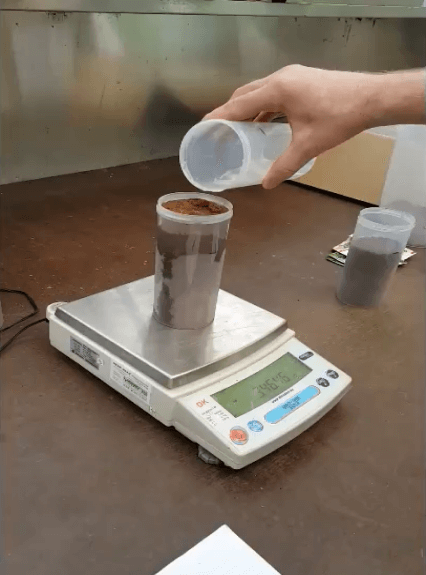
The biggest barrier to growing crops on Mars, though, is the lack of something seemingly simple: Good old-fashioned dirt. Soil on Earth is full of living organisms as well as certain minerals, like phosphorus and potassium, that plants use. Mars doesn’t have soil — instead, it has a dead, dusty material called regolith covering its surface.
We don’t know the exact details of what this regolith is composed of, and it might have different compositions in different regions. But we do have a rough idea of what’s in it, which has allowed NASA to develop a regolith simulant. This is essentially a re-creation of Martian soil based on our current knowledge the planet’s surface.
That means you can experiment with Martian “soil” here on Earth. While the simulant isn’t cheap, it is available to purchase for research purposes. Around a decade ago, Wamelink wondered if the simulant could be used to grow crops and looked into the subject. “What I found out,” he said, “much to my surprise I must say, is no one ever tried that.”







His team planted 4,200 seeds of 14 different species, expecting that most of them would die. But the results were very different from what the researchers predicted. Almost all the seeds germinated — some of them within 24 hours. This actually caused problems, Wamelink said with a laugh, because the team suddenly had to tend to a huge crop of over 4,000 plants.
The plants required a lot of careful watering because the regolith is hydrophobic, meaning it doesn’t absorb much moisture. So future Martian farmers will need plenty of water to keep their crops growing.
And while the plants did grow in the Mars regolith simulant, they reached only a few centimeters high and didn’t produce anything edible. To get plants to grow to a full size and produce vegetables, you need to add nutrients.
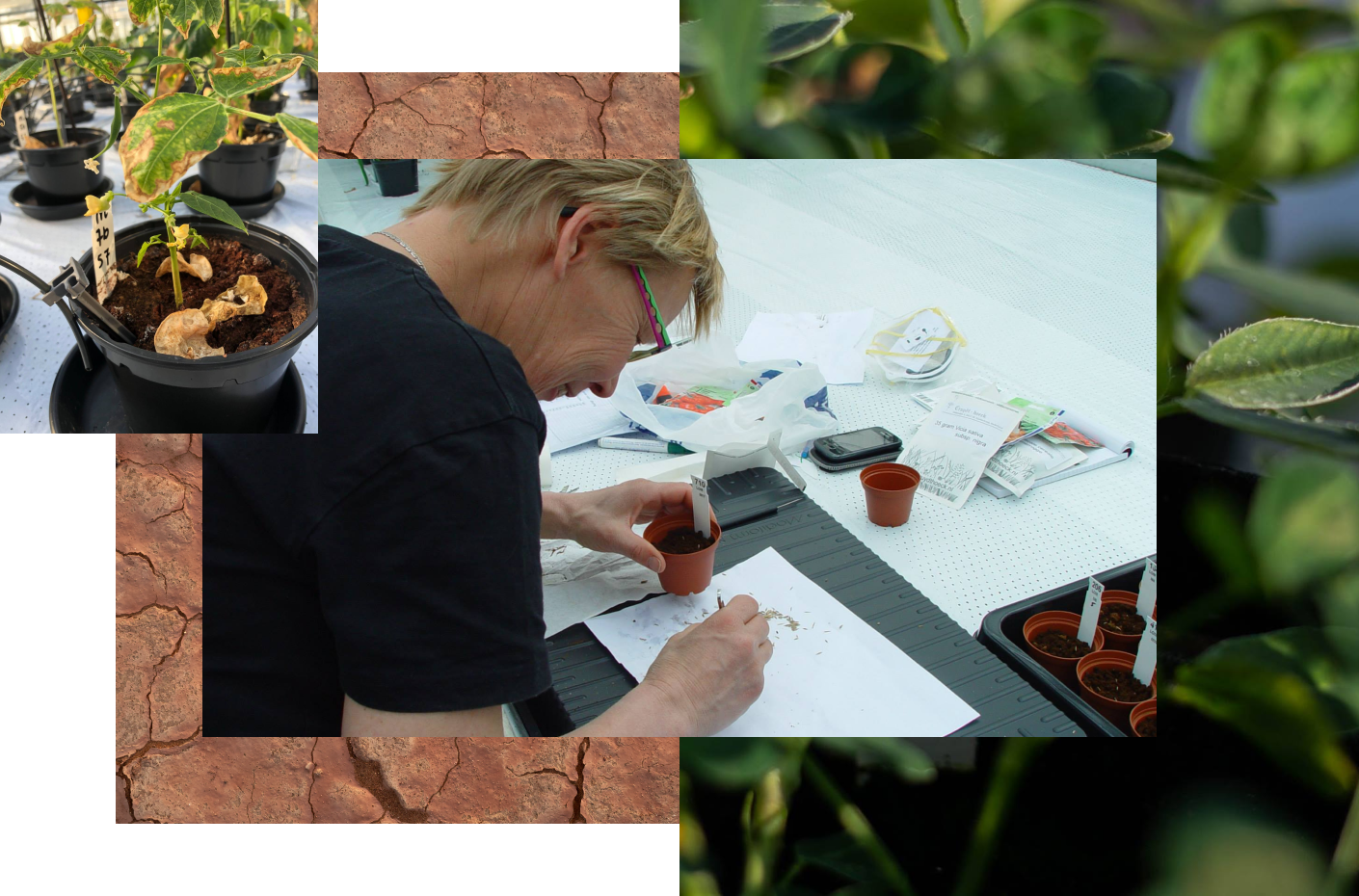
A key component that Mars soil is missing as far as plants are concerned is organic matter. Organic matter is a particularly important source of nutrients when broken down by bacteria, which means we’ll need to add bacteria to future growing regions as well.
Fortunately, as walking colonies of microbes, humans are bristling with bacteria. So, although it’s a rather unpleasant concept, we do have a way to acquire them. The most efficient method would be to preserve the urine and feces produced by astronauts on their monthslong journey to Mars, then add it to the regolith to cultivate bacteria. If you’ve seen the movie The Martian, where lost astronaut Mark Watney grows potatoes in Mars soil with his and his crewmates’ sewage, it’s the same concept. However, to keep everyone healthy, you’d need to take steps to kill off any pathogens that could be transmitted via human waste.
.svg)
.svg)
.svg)
.svg)

.svg)
.svg)
.svg)
.svg)
.png)
You could help along the process of digesting organic matter and recycling it into the soil by introducing worms. Even on Mars, earthworms are a gardener’s best friend, as they digest organic matter and produce fertilizer along with digging tunnels that provide important aeration and water retention for the plant roots to grow. “I think they are essential for a good system,” Wamelink said. Plus, worm eggs can be stored for a long time, making them potentially transportable to Mars.
Once your Mars regolith is enriched with nutrients, organic matter, bacteria, and worms, you can start planting seeds. Seeds can be brought from Earth without too much trouble as they’re small and light.
Future Mars-dwellers may have a more varied choice of diet than you imagine. Wamelink tells me that all kinds of edible plants can grow in Martian regolith simulant. So while the hydroponic systems used in places like the International Space Station, where plants are grown not in soil but suspended in a nutrient solution, are better suited to growing leafy greens than starchy vegetables, you can grow practically anything in soil. Mars regolith simulant has been used to grow potatoes, green beans, tomatoes, carrots, radishes, wheat, rye, and more.
.svg)
.svg)
.svg)
.svg)
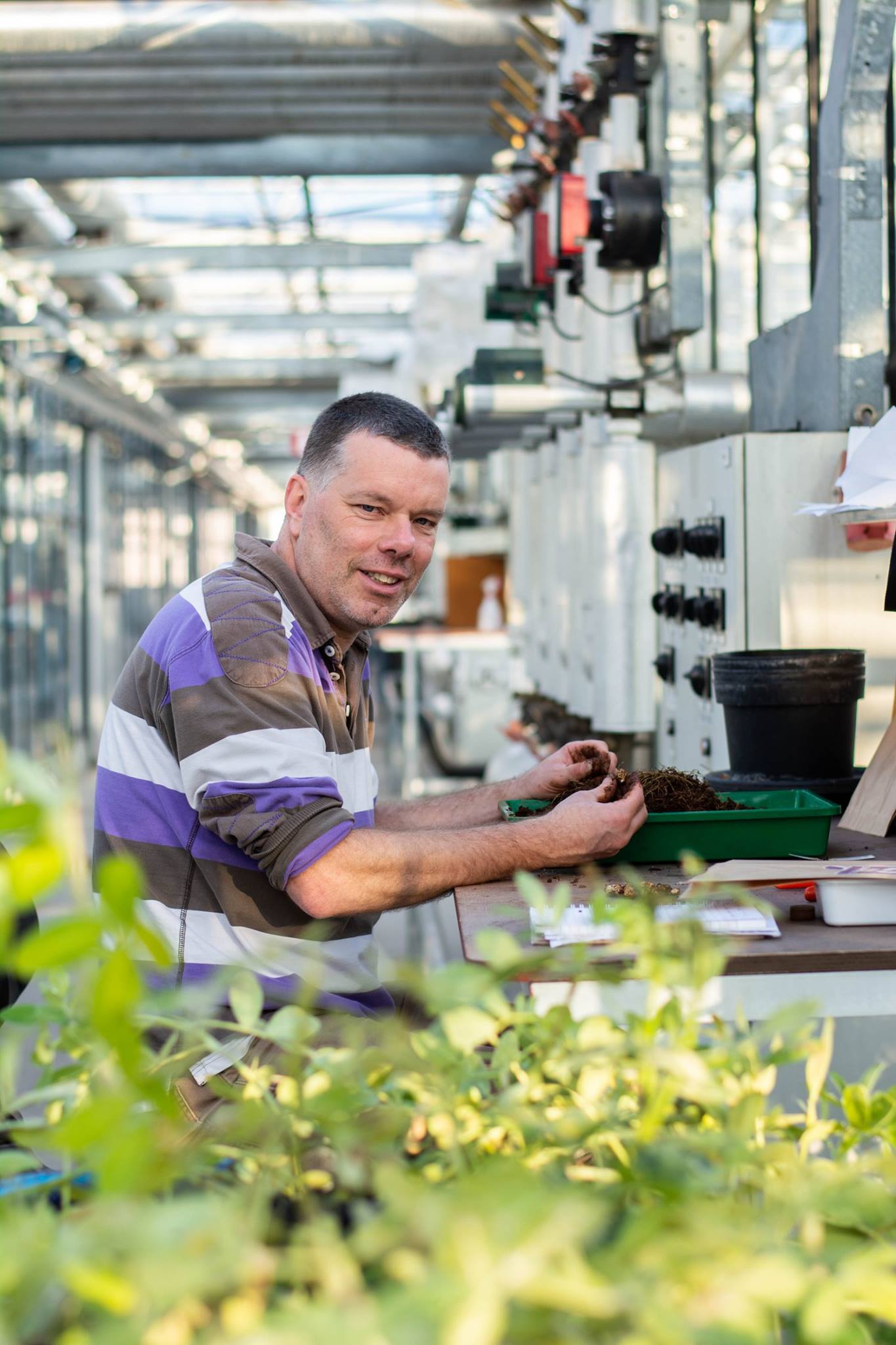
One of the concerns about the safety of Mars soil is the presence of dangerous heavy metals. “It’s not only zinc, which we need a little bit of, but also cadmium, lead, mercury — all things you don’t want in your food,” Wamelink said.
However, that isn’t necessarily as big a problem as you might think. “That’s not really different from Earth,” he pointed out, as heavy metals can be found in our soil too. The issue is whether these heavy metals are bound in a way that prevents them from being released into the soil and subsequently absorbed by plants.
The good news is that when vegetables grown in the simulant were analyzed, they were found to be safe to eat. Heavy metals were below dangerous levels in all the food, and in some cases the levels were even lower in the regolith-grown vegetables than in the vegetables grown in regular potting soil, perhaps due to pollutants like car exhaust contaminating the soil here on Earth.
There is also a concern about how acidic the soil is on the moon and Mars, which could limit the plants’ ability to access another essential molecule, phosphate. A new area of research being considered is whether adding certain types of fungi to the regolith could solve this issue.
“We can take fungi with us to Mars that can grow actually in rocks and release phosphates,” Wamelink suggested as a future avenue for exploration. “They live in symbiosis with the roots of the plants.”
.jpeg)




Perhaps the biggest barrier to growing food safely on Mars is the issue of perchlorates, chemicals found in the regolith that are toxic to both humans and plants. These are so dangerous that they aren’t included in simulant samples for health reasons.
That doesn’t mean we have to give up on the dream of Mars-grown food though. Andrew Palmer of the Florida Institute of Technology, senior author of the study, told Digital Trends in an email that while the presence of perchlorates on Mars is challenge for food production, “it isn’t a deal breaker.” It should be possible to introduce microorganisms or specific plants into the ecosystem to clean the toxins from the regolith in a process called bioremediation. “Such helpers are common players in our ecosystems on Earth. There is no reason we should ignore their potential to contribute to the ecosystem we are designing for our Martian colonists,” he said.
Recent research has suggested that the presence of these perchlorates in the regolith might be more of a problem than previously realized. When researchers took regolith simulant and added calcium perchlorate in amounts similar to those found on Mars, plants weren’t able to grow in it even when extra nutrients were added.
.svg)
.svg)
.svg)
.svg)

Another researcher involved in studies on the viability of regolith for growing crops, Laura Fackrell of the University of Georgia, concurred that perchlorates were a challenge but not an insurmountable one.
She suggested perchlorates could be cleaned from the regolith using bacteria, as there are multiple bacteria species that can consume or degrade perchlorates, some of which are used for cleaning contaminated water here on Earth. But there are challenges here too. This reaction produces both oxygen and chloride — and although chloride is nontoxic and can be beneficial to plant growth, too much of it can harm or even kill plants. We need more research to know what its effects on plant life would be. “We do not have enough data to say if the amount of chloride produced by this process would be too much for plants, but it is likely to be,” she said.
Another potential solution would be to literally wash the perchlorates out of the regolith. Perchlorates are a kind of salt and are soluble in water, so rinsing the regolith would remove them. “However, this also might remove other nutrients like nitrates,” Fackrell warned. Not to mention the issues with using precious water for this purpose. The presence of perchlorates isn’t necessarily all bad news though. Fackrell pointed out that having bacteria consume perchlorates to clean the soil would produce the useful byproduct of oxygen, which could be a part of a sustainable system for meeting astronauts’ needs: “Perchlorates represent a very real challenge; however, they also present opportunity to be turned into a resource for oxygen.”
%20(1).png)
It helps to think about setting up agriculture on Mars as a long-term game. The aim is not just to grow a single yield of crops but to set up a sustainable system.
The first harvest is the hardest. Once that is done and the bacteria are established, any plant matter left over from previous harvests can be added back to the soil, which both adds nutrients and helps to hold water. So over time, the soil will become more fertile and more hospitable to plants.
That means there’s a strong impetus to start attempts to grow plants as soon as humans arrive on Mars for any length of time. “I think you have to start from the first expedition to start to grow your own food. Otherwise, it most likely won’t be possible to do so,” Wamelink said. The early expeditions would certainly bring their own food as well, in case there were issues with crop growth. But they could begin the process of making the soil usable.
Another consideration is how you deal with plant pollination, both for a more generous harvest and to create seeds for future crops. Many species of plants use the wind to carry their pollen around. But that means you would need to set up airflow in a Mars habitat, which wouldn’t be easy. There is another option, though, which is to use bees.
Bees are excellent pollinators and could be brought from Earth to live in a Martian habitat. Bumblebee queens could potentially be put into hibernation for a space journey and then released to spread around the pollen.
Flies are another option, and they have another advantage: Fly larvae can be edible, and as squeamish as many people might be about eating them, they could provide an important source of protein in an otherwise vegetarian or vegan diet.
.svg)
.svg)
.svg)
.svg)
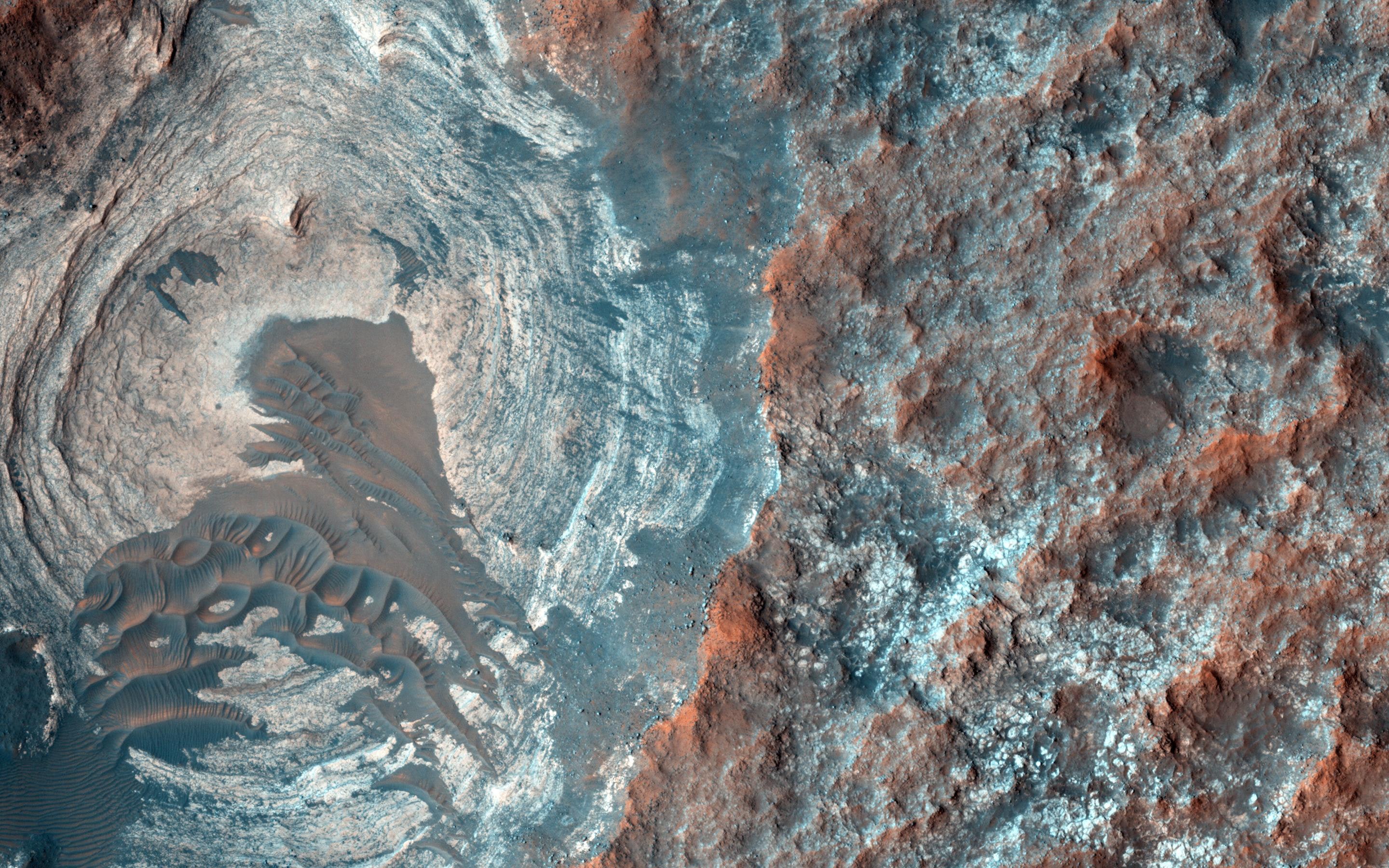
Despite the many complexities of growing food on Mars, it is theoretically possible. There are many details yet to be worked out, but in principal we may be able to grow crops there as long as astronauts bring the right materials with them. “I have a shopping list!” Wamelink joked.
The one limitation he did stress was that all these experiments have been based on the Mars simulant currently available, so the results are only as accurate as the simulant is. The issue of perchlorates and how they might affect both plants and humans is an open one, and future missions like the Mars Sample Return should help us become more certain about exactly what we can expect from the Mars environment.
It won’t be easy, but astronauts could one day enjoy fresh, Mars-grown vegetables as an everyday part of their diet. “You have to do many things to get it going,” Wamelink cautioned, “but we know now how to do it.”
Of all the resources that visitors to Mars will require, one of the most significant is water – not only for drinking, but also for making rocket propellant and other substances like oxygen.
By Georgina Torbet